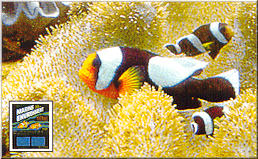This internet publication’s reception has exceeded our expectations. Most of our response has been from the US but we have also received responses from 20 other countries. Inside the US, a disproportionately large number of inquiries have come from the East Coast. This skewed response pattern appears to be the result of the sale of products base on price rather than quality. E.g. If it is cheap, it will sell. The majority of e-mail received was in response to the information from the S-15™ Report™. The S-15™ Report™ is the culmination of several years of intense scientific investigation comparing various marine salts to natural sea water (NSW). Tests were performed by independent laboratories and a US Government prime contract testing laboratory. Our first issue detailed facts about Instant Ocean®. Our second issue offered facts about BIO-SEA®, a true sea water formula™. The response from these two sea water comparisons was unbelievable. Most aquarists now recognize many of their marine aquarium problems are directly related to the quality of the marine salt they use (i.e. brown algae, low pH, pets that waste away, etc.) For those of you that thought the test results of Instant Ocean® and BIO-SEA® were… interesting, hold on to your hat and grab your chin strap. This issue will reveal facts about 11 more marine salts. Having been part of the aquarium industry of 30 years, I have seen good products and bad. However, while reviewing information from the S-15™ Report™ I was utterly disgusted by the undeniable facts regarding what total rubbish is offered to the marine hobbyist. Products promoted as the proverbial panacea, in actuality resembled a placebo. The hobbyist, the person that pays the most has been repeatedly violated by falling victim to some of the most misleading, untruthful and blatantly false advertising discovered. Run this through your decoder ring… Disingenuous marketing is a gross understatement. Printed aquarium hobby magazines rely on advertising revenue to exist. Consequently some information will not be published if it risks offending large advertisers. This leads to symbolism over substance in mainstream periodicals. The S-15™ Report™ is simple, straight forward and amenable to testing for proof. No one has offered verifiable test results for the number and concentrations of elements in marine salts, except the S-15™ Report™. Of all of the products offered to marine aquarists the easiest product to test is a marine salt. Assume you are starting with a viable (if not optimal) marine aquarium. Do a 25% water change and observe after one month. Are the colors on your fish as vibrant or more? Are your corals now flourishing? Are you now growing a wider variety of beneficial algae? If the answers to any of these questions indicated a poorer environment, then stop using that salt. Better to waste the remainder than subject your expensive pets to it. For hobbyists that resist facts… Continue to make frequent and massive water changes using a marine salt who’s business survival depends on your current maintenance program. The add a variety of liquid and powder additives hoping to improve a poorly manufactured product. Will you be blissfully unaware you are creating an out-of-control situation? It is unreasonable to believe captive marine pets can thrive to their full genetic life expectancy using this approach. For those who understand some basic facts of life: This is your publication. Please read on. Michael Del Prete. Editor |
